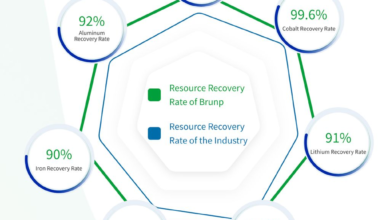GM Will Remove Apple CarPlay And Android Auto From All Its Cars, Not Just EVs

- The days of Apple CarPlay and Android Auto compatibility in General Motors’ cars are numbered.
- After ditching smartphone projection support in most of its EVs, GM plans to remove it from its gas cars, too.
- CEO Mary Barra said during The Verge’s Decoder podcast that killing the two systems will remove distractions, as built-in multimedia systems improve over time.
General Motors will drop support for Apple CarPlay and Android Auto from all of its vehicles in the following years. The move, announced by GM’s CEO Mary Barra during The Verge’s Decoder podcast, comes after the automaker decided to ditch the two smartphone projection systems in its new electric models in 2023.
Currently, the only GM EVs that ship with Apple CarPlay and Android Auto support in the United States are the Cadillac Lyriq and GMC Hummer EV. That said, all of GM’s gas-powered cars still have smartphone projection support, which has proven controversial over the last two years. What’s more, EVs sold overseas also support smartphone projection.

The Cadillac Lyriq EV has CarPlay integration, but it’s anything but elegant.
Photo by: InsideEVs
Asked about this, Barra said that GM first made the move with its EVs because they were in the development spotlight, so all the major decisions were applied to them. The company’s CEO added that they were getting a lot of feedback from customers that it was “very clunky” moving from the car’s native interface to CarPlay and back.
“It wasn’t seamless, and frankly, in some cases, it could be distracting to move back and forth if you were doing something that you could do on a phone projection type of system, versus if you needed to do something in the vehicle,” Barra said during the Decoder podcast.
Now that most of General Motors’ electric lineup is where it needs to be, the same change will be applied to upcoming gas-powered vehicles, as they go through mid-cycle refreshes or major redesigns.
“When you look at the fact that we have over 40 models across our portfolio, you don’t just do this, and they all update,” said Barra. “As we move forward with each new vehicle and major new vehicle launch, I think you’re going to see us consistent on that. We made a decision to prioritize our EV vehicles during this timeframe, and as we go forward, we’ll continue across the portfolio.”
GM’s new cars feature Android Automotive-based infotainment systems, allowing them to run native Android applications. However, owners need to log in separately in every app, which can feel like a chore. Sterling Anderson, the automaker’s Chief Product Officer, who was also a guest on the podcast, said that the company is working on a way to simplify in-vehicle logins, but didn’t provide details on how that would happen.
The availability of native in-car apps is also a point of concern, especially for Apple iPhone users, who might find that they can’t use some of their favorite apps in GM’s vehicles because they’re simply not available on Google’s platform. Anderson, however, said that the list of available apps will grow over time.
“But frankly, it’s a very Jobsian approach to things,” said Anderson. “The removal of the disk drive, nobody liked that, everybody on the forums and Facebook was complaining about it, but to that [Steve Jobs] said, “Look, guys, flash storage really is the future. Get on board, you’ll see that.” That’s kind of what we’re saying here; in fact, that’s exactly what we’re saying.”
Source link


